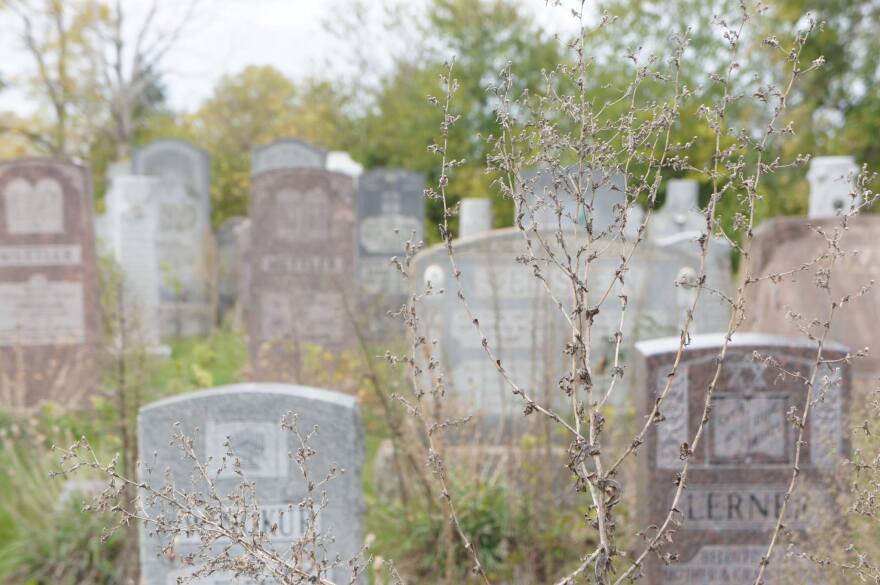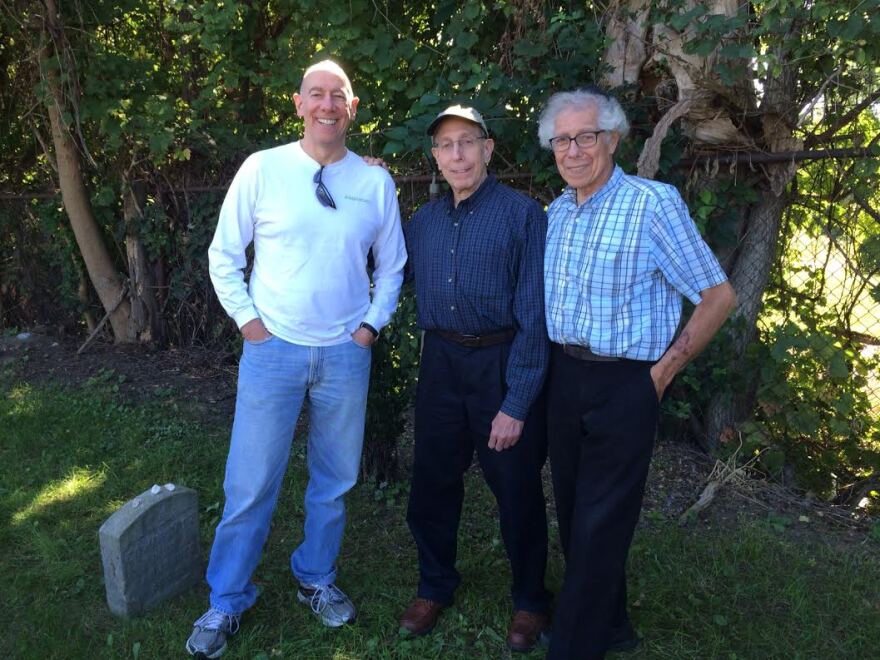If you drive Van Dyke on Detroit’s east side, you could easily miss B’nai David Cemetery. It sits on a little hill up off the road, its rows of 1,300 plots tightly spaced.
The gravestones are carved in Hebrew, Yiddish and English. Some look like tree trunks that have been cut short, symbols of lives that ended too soon.
A few years ago, you wouldn’t even have been able to see some of the stones. The weeds had grown tall. Urns had been stolen. Some of the headstones toppled.
But things are looking spiffier these days, thanks in large part to the work of David Goldman.
Goldman doesn’t have blood relatives buried at B’nai David. But his wife’s great-grandmother was buried here in 1918.
“This is Esther Malka Shibovich,” Goldman says, standing at her grave. Like a number of people buried here, Shibovich died during the flu pandemic. “She was caring for her neighbors and contracted it. She was 38 years old.”

After he got married and moved to the Detroit area, Goldman would come here with his in-laws to visit the grave. “And over the years we saw the progressive decay of this place,” Goldman says. “And four years ago, it had really hit rock-bottom. The grass was higher than the headstones, and it just was a mess.”
The Beth David (later B’nai David) Synagogue in Detroit founded the cemetery in 1897, and it had its first burial in 1903. It’s located where it is because the land was cheap, and it was on the streetcar line.
By the middle of the 20th century, though, Detroit’s Jewish residents were relocating to the suburbs, and in the mid-‘50s B’nai David Synagogue relocated to Oakland County.
Goldman says in some ways, the fate of the cemetery tracks with the city of Detroit itself.
“First of all, this cemetery was never in the Jewish community geographically,” Goldman says. “Second of all, it became a place of perceived and actual danger. Especially for elderly people who were less secure about their safety, to come here, park, walk in … there are no more homes here anymore. It’s just been decimated. So I think, had the Jewish population stayed here, this probably wouldn’t have happened. But, it did.”
By the 1970s and 80s, fewer families with ties to B’nai David were burying their loved ones there. And in the mid-‘90s the congregation had become so small it quit holding services.
It also used money from the cemetery’s perpetual care fund to try to stay afloat.
So, the grass grew over the stones, and the gates were only opened a couple times a year.

On one of those days a few years ago, David Goldman was there with his family. His daughter Eva was coming up on her bat mitzvah, and they figured a cemetery clean-up would be a good service project, “and that first year we got almost a couple hundred people and we cleaned it up, and raised enough money to keep the grass cut,” Goldman says.
They started doing the clean-ups a couple times a year. Eventually, Goldman tracked down the burial records, and had an online map created.
People call him up, looking for their relatives. Not too long ago he got a call from the Droz family. Gary, Alan, and Ken are brothers. They were trying to track down the grave of an uncle who died long before any of them were born.
But Goldman didn’t have a Droz in his records.
Turns out, whoever carved the stone spelled the name wrong – it says “Broz” instead. Once they solved the mystery, the brothers came to find it.
“See, it’s faded on this side, but this you can clearly see ‘Broz, Edwin, 1926, age 2,’” says Gary Droz, standing near the gravestone in the children’s section, near the southern edge of the cemetery.
Edwin Droz died of whooping cough when he was just two years old, and Gary’s father was six.
“And my dad mentioned that he had a little brother that died, but we didn’t know he was in this cemetery ‘til my brother was doing some genealogy research,” he says.
Gary’s brother Ken says they think Edwin died near his birthday. He says growing up, their father never wanted anyone to circle a birthday on a calendar – too painful a reminder of his younger brother’s death.

For David Goldman, these connections to the past are important. He says that’s why he does this.
“For me it’s about history, and it’s about respecting those who sacrificed and came before us,” Goldman says. “I don’t know, I feel a strong pull to pay regards and teach my own children at least, the importance of honoring those who came before us, and that we should honor that in some way.”
The city of Detroit may soon honor the history of B’nai David and those who are buried there. A proposal to declare the site an historic district could see a vote before the end of the year.
Support for arts and cultural reporting on Michigan Radio comes in part from a grant from the Michigan Council for Arts and Cultural Affairs and the National Endowment for the Arts.





